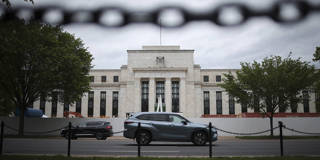The US Federal Reserve has clearly signaled that it is in no hurry to align its policy interest rate with the presumed value of the neutral rate, where monetary policy is neither stimulative nor restrictive. But with the macroeconomy already in balance, what justifies the Fed's reluctance?
BERKELEY – At its monthly meeting on January 31, the Federal Reserve’s Federal Open Market Committee held firm on interest rates. “The Committee judges that the risks to achieving its employment and inflation goals are moving into better balance,” the FOMC explained in its press release. But the “economic outlook is uncertain, and the Committee remains highly attentive to inflation risks.” As a result, “[t]he Committee does not expect it will be appropriate to reduce the target range until it has gained greater confidence that inflation is moving sustainably toward 2 percent.”

BERKELEY – At its monthly meeting on January 31, the Federal Reserve’s Federal Open Market Committee held firm on interest rates. “The Committee judges that the risks to achieving its employment and inflation goals are moving into better balance,” the FOMC explained in its press release. But the “economic outlook is uncertain, and the Committee remains highly attentive to inflation risks.” As a result, “[t]he Committee does not expect it will be appropriate to reduce the target range until it has gained greater confidence that inflation is moving sustainably toward 2 percent.”